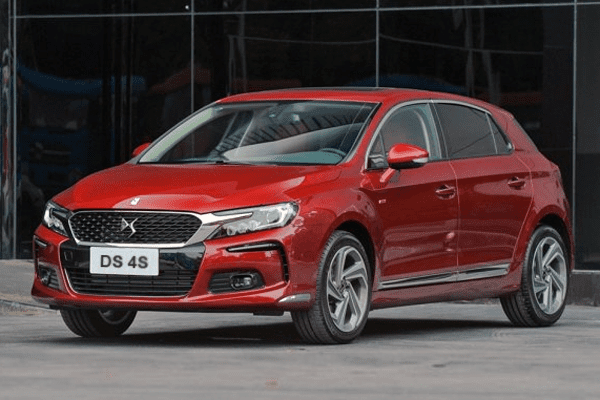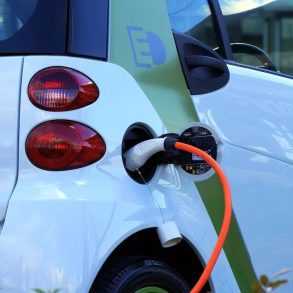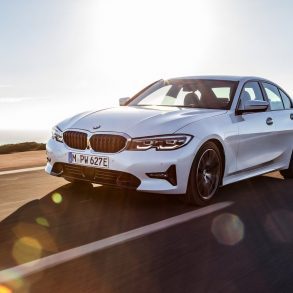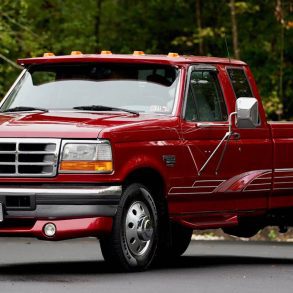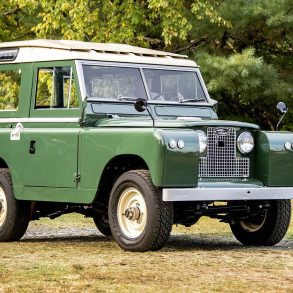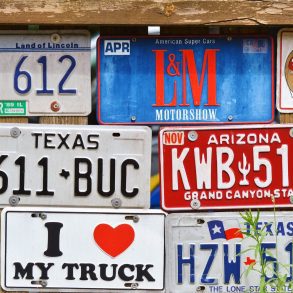A new year is always a nice opportunity to reflect on the past year and in our case, that means looking at which cars have sold disappointingly in 2016 in China. We’ve already covered the surprises and disappointments in Europe as well as the surprises and disappointments in the US and the Chinese success stories of 2016, now let’s take a look at the Chinese disappointments. We’ll make our predictions for 2017 in a separate article. In a market that has grown 18% in the first 11 months of the year, it should be hard to find true losers, but still there are a few. I won’t even mention the biggest loser of all: Fiat with sales down 58,6% because the Italian brand simply isn’t relevant in China, with just 0,06% market share.
1. PSA
Last year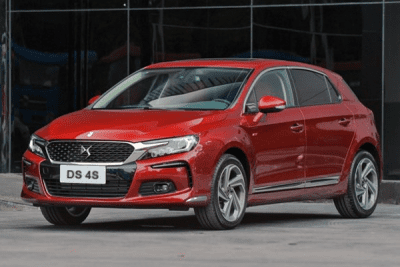 , we predicted Peugeot-Citroën’s luxury brand DS would be on this list. And even though it was already down in volume last year, DS managed to underwhelm even our lowest expectations for 2016. In its third full year of sales, it’s down for the second consecutive year, and not by a small margin: -22,5% through November. None of its models has improved on last year, and its latest launch DS 4S has failed miserably with just 1.435 sales in 9 months, peaking at 276 sales in September. Whoever thought launching a premium hatchback in China would be a great idea deserves to be fired on the spot. Then again, the DS6 crossover is also down 22,5% but still by far the brand’s best selling model.
, we predicted Peugeot-Citroën’s luxury brand DS would be on this list. And even though it was already down in volume last year, DS managed to underwhelm even our lowest expectations for 2016. In its third full year of sales, it’s down for the second consecutive year, and not by a small margin: -22,5% through November. None of its models has improved on last year, and its latest launch DS 4S has failed miserably with just 1.435 sales in 9 months, peaking at 276 sales in September. Whoever thought launching a premium hatchback in China would be a great idea deserves to be fired on the spot. Then again, the DS6 crossover is also down 22,5% but still by far the brand’s best selling model.
Sadly for the French, DS is not their only brand to suffer from poor product planning, and a lack of new products: Peugeot‘s only new model has arrived too late to make a mark, the 4008 (also known as the new generation 3008 in Europe) started sales in the fourth quarter and couldn’t prevent the French brand from losing 17,1% through November in a market up 18,8%. That means market share is down from 2% in 2015 to less than 1,5% in 2016 while all of the brand’s models are down on last year by double digits, except for the 301 sedan. Let’s hope the 4008 can continue its impressive performance of November into 2017, as the brand desparately needs a success story. The same goes for Citroën, which has done even worse in 2016, with sales down 18,5% including a 33,5% loss in November, as market share plunged from 1,5% to just over 1%, a loss of a third of its share in a single year. Back in 2005, Citroën held a 3% share of the Chinese car market.
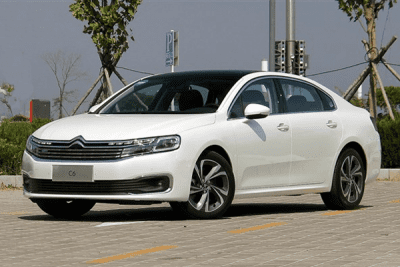 So what’s gone wrong with the PSA brands? For one, a lack of new products, as Peugeot has launched only two new nameplates in the last two years: the failed 308S hatchback and the 4008 crossover, but this arrived in November 2016, too late to make an impact on brand sales. Citroën has launced the C4 sedan and the low-volume C6 in the past two years, and the former can’t even make up for lost sales of the discontinued C-Quatre sedan. In comparison, VW has launched 5 new models in the past 2 years and its sister brand Skoda, which trailed the French brands by 31% (Peugeot) and 6,2% (Citroën) in 2015, has outsold the latter by 39,4% in 2016 and is on par with the former in 2016 through November. The recently introduced 4008 is a good step in the right direction, but it may be too little too late, as the brands should’ve taken advantage of their brand recognition in China to bank on the predictable increase in crossover sales and should stay on top of their game by launching new models at a faster pace if they really want to stay volume brands in China.
So what’s gone wrong with the PSA brands? For one, a lack of new products, as Peugeot has launched only two new nameplates in the last two years: the failed 308S hatchback and the 4008 crossover, but this arrived in November 2016, too late to make an impact on brand sales. Citroën has launced the C4 sedan and the low-volume C6 in the past two years, and the former can’t even make up for lost sales of the discontinued C-Quatre sedan. In comparison, VW has launched 5 new models in the past 2 years and its sister brand Skoda, which trailed the French brands by 31% (Peugeot) and 6,2% (Citroën) in 2015, has outsold the latter by 39,4% in 2016 and is on par with the former in 2016 through November. The recently introduced 4008 is a good step in the right direction, but it may be too little too late, as the brands should’ve taken advantage of their brand recognition in China to bank on the predictable increase in crossover sales and should stay on top of their game by launching new models at a faster pace if they really want to stay volume brands in China.
2. Venucia
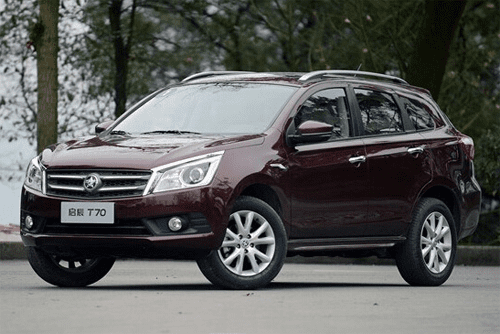 Venucia is Dongfeng-Nissan’s low-cost local brand, developed to compete with the likes of Changan, Geely and Baojun for the value conscious buyer. Problem is, while other local brands have been pumping out new crossover models at lightning speed, Venucia has lagged. It has launched only one new nameplate in the past two years, and unsurprisingly that Nissan Qashqai-based crossover called T70 has immediately become the brand’s best selling model. In 2014, the brand also introduced the R30 minicar, but that model has peaked at less than 14.500 sales in its first year of sales. In comparison, Baojun, a similar brand of SAIC-GM-Wuling, which trailed Venucia in volume as recently as 2013 (100.500 for Baojun vs. 105.425 for Venucia) has launced three new models in the same timespan, and into the booming heart of the Chinese car market: the 730 MPV has racked up over 760.000 sales in 26 months, an average of 29.230 monthly sales, and peaking at almost 47.700 sales in 2016, while the 560 crossover sold 434.500 units in just 17 months, peaking at just over 40.000 sales in January 2016. So why did Dongfeng-Nissan slack on new products for it low-cost brand? And why did Nissan give the production line for the previous generation Pathfinder to its Chinese partner to continue production as the Dongfeng Fengdu MX6? The brand’s first models R50 hatchback and D50 sedan were also slightly restyled versions of a discontinued model: the first generation Nissan Tiida hatchback and sedan, and were actually relatively successful, giving the new brand over 100.000 sales in 2013, its first full year on the market, but sales have remained at that level ever since. The brand’s market share peaked that year at 0,65%, and 2016 is the first year since its launch in 2012 that the brand loses volume. Nissan has pledged to lay more focus on its low-cost brand as this is where the growth for the Chinese market is at the moment: price conscious buyers, most of them looking for affordable crossovers and SUVs.
Venucia is Dongfeng-Nissan’s low-cost local brand, developed to compete with the likes of Changan, Geely and Baojun for the value conscious buyer. Problem is, while other local brands have been pumping out new crossover models at lightning speed, Venucia has lagged. It has launched only one new nameplate in the past two years, and unsurprisingly that Nissan Qashqai-based crossover called T70 has immediately become the brand’s best selling model. In 2014, the brand also introduced the R30 minicar, but that model has peaked at less than 14.500 sales in its first year of sales. In comparison, Baojun, a similar brand of SAIC-GM-Wuling, which trailed Venucia in volume as recently as 2013 (100.500 for Baojun vs. 105.425 for Venucia) has launced three new models in the same timespan, and into the booming heart of the Chinese car market: the 730 MPV has racked up over 760.000 sales in 26 months, an average of 29.230 monthly sales, and peaking at almost 47.700 sales in 2016, while the 560 crossover sold 434.500 units in just 17 months, peaking at just over 40.000 sales in January 2016. So why did Dongfeng-Nissan slack on new products for it low-cost brand? And why did Nissan give the production line for the previous generation Pathfinder to its Chinese partner to continue production as the Dongfeng Fengdu MX6? The brand’s first models R50 hatchback and D50 sedan were also slightly restyled versions of a discontinued model: the first generation Nissan Tiida hatchback and sedan, and were actually relatively successful, giving the new brand over 100.000 sales in 2013, its first full year on the market, but sales have remained at that level ever since. The brand’s market share peaked that year at 0,65%, and 2016 is the first year since its launch in 2012 that the brand loses volume. Nissan has pledged to lay more focus on its low-cost brand as this is where the growth for the Chinese market is at the moment: price conscious buyers, most of them looking for affordable crossovers and SUVs.
3. Chevrolet
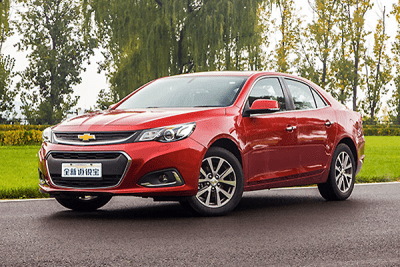 The second consecutive year Chevrolet is among our disappointments in China, as the American brand again hasn’t had an easy year in 2016. It’s the fourth consecutive year of market share loss, down to 2,2%, its lowest market share since at least 2002 and down almost one percentage point on 2015 (3,15%), down almost two percentage points on 2014 (4,17%) and down more than three percentage points on 2012 (5,33%). Volume is at the lowest since 2010as the brand drops 6 places in the brands ranking: from 11th in 2015 to 17th in 2016 (it was 8th in 2014), being passed by Geely, Baojun, BAIC, Dongfeng, Kia and Audi. For Geely it’s the first time since 2009 to outsell Chevrolet, for Kia the first time since 2005 and for Audi the first time since 2003. Baojun didn’t even exist until 2010, when Chevrolet sold over half a million cars. This low-cost local brand, owned by SAIC-GM-Wuling Automobile, a joint venture of Chevrolet’s parent General Motors and SAIC Motor, GM’s Chinese production partner for Chevrolet, may in fact be cannibalizing its American cousin. Since Baojun’s launch, combined sales of the two brands have gradually risen from 563.000 in 2010 to 1,14 million in 2015 and an expected 1,3 million in 2016, except now the newby has become the larger of the two. In another comparison, sister brand Buick sold fewer cars in China than Chevrolet did in 2010, but fast forward six years and Buick outsells Chevy by a 2,4-to-1 ratio.
The second consecutive year Chevrolet is among our disappointments in China, as the American brand again hasn’t had an easy year in 2016. It’s the fourth consecutive year of market share loss, down to 2,2%, its lowest market share since at least 2002 and down almost one percentage point on 2015 (3,15%), down almost two percentage points on 2014 (4,17%) and down more than three percentage points on 2012 (5,33%). Volume is at the lowest since 2010as the brand drops 6 places in the brands ranking: from 11th in 2015 to 17th in 2016 (it was 8th in 2014), being passed by Geely, Baojun, BAIC, Dongfeng, Kia and Audi. For Geely it’s the first time since 2009 to outsell Chevrolet, for Kia the first time since 2005 and for Audi the first time since 2003. Baojun didn’t even exist until 2010, when Chevrolet sold over half a million cars. This low-cost local brand, owned by SAIC-GM-Wuling Automobile, a joint venture of Chevrolet’s parent General Motors and SAIC Motor, GM’s Chinese production partner for Chevrolet, may in fact be cannibalizing its American cousin. Since Baojun’s launch, combined sales of the two brands have gradually risen from 563.000 in 2010 to 1,14 million in 2015 and an expected 1,3 million in 2016, except now the newby has become the larger of the two. In another comparison, sister brand Buick sold fewer cars in China than Chevrolet did in 2010, but fast forward six years and Buick outsells Chevy by a 2,4-to-1 ratio.
Chevrolet’s only model to improve volume in 2016 is the updated Malibu, thanks to the continuation of the previous model as a low-budget option next to the all-new Malibu XL (sales figures of the two are combined). None of its other models has improved volume on 2015, except for the Lova RV which was only launched last December but which has barely made a dent in Chevrolet’s volume. The all-new Cavalier has been launched successfully, becoming the brand’s second best seller after the Sail, but its cannibalization of the Cruze means it doesn’t bring in additional volume.
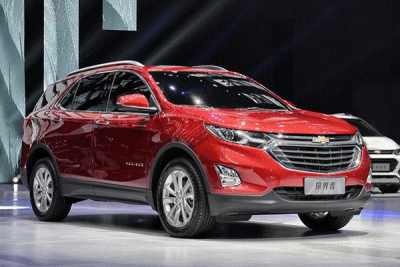 However, 2016 may be the year Chevrolet hits rock bottom in China and can start its recovery. According to GM, the brand will roll out more than 20 totally new or refreshed models in China through 2020. 7 of those will be crossovers or SUVs, and nearly half will be new nameplates for the Chinese market. In addition, the brand will have to comply with China’s new EV mandate, so we can also expect a series of alternative power versions, including plug-in hybrids. Included in those 20 are the 2016 launched of the Malibu XL and XL hybrid, Cruze and Cavalier, as well as the new generation of the imported Camaro. In 2017, there will be a new Cruze hatchback and the start of local production of the next generation Equinox crossover, which should give the brand a nice volume boost. The Trax will be facelifted and the brand will launch the Silverado and Colorado pick up trucks in China. These will be imported so won’t be featured in our data, but they can be huge image boosters for the brand, promoting its American heritage. So Chevrolet is simultaneously one of our disappointments of 2016 and a predicted success story for 2017.
However, 2016 may be the year Chevrolet hits rock bottom in China and can start its recovery. According to GM, the brand will roll out more than 20 totally new or refreshed models in China through 2020. 7 of those will be crossovers or SUVs, and nearly half will be new nameplates for the Chinese market. In addition, the brand will have to comply with China’s new EV mandate, so we can also expect a series of alternative power versions, including plug-in hybrids. Included in those 20 are the 2016 launched of the Malibu XL and XL hybrid, Cruze and Cavalier, as well as the new generation of the imported Camaro. In 2017, there will be a new Cruze hatchback and the start of local production of the next generation Equinox crossover, which should give the brand a nice volume boost. The Trax will be facelifted and the brand will launch the Silverado and Colorado pick up trucks in China. These will be imported so won’t be featured in our data, but they can be huge image boosters for the brand, promoting its American heritage. So Chevrolet is simultaneously one of our disappointments of 2016 and a predicted success story for 2017.
4. Original design
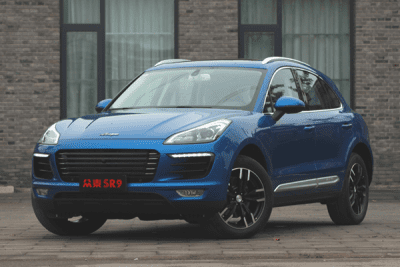 Design has been a loser in China this year, especially original design. Just when some Chinese brands are making great inroads with modern and appealing design, most notably Geely as mentioned in our Success stories of 2016, but also GAC Trumpchi with its GS8 SUV, Qoros with its Qoros 5 SUV and SAIC Roewe with its RX5 crossover, there are still a handful of brands who’d rather just blatantly copy an existing design from an import brand. I’ve already written about these in my article on Chinese copycat design, so check that out for the details. Unfortunately, these models are still very successful on the Chinese market, seemingly more so the more closely they resemble their original, as the Landwind X7 (Range Rover Evoque clone), Zotye SR9 (Porsche Macan clone) and to only a slightly lesser degree the Zotye SR7 (Audi Q3 clone) are helping their brands reach record volume, thanks to their looks of an import luxury car at a fraction of the price of the original. In fact, from what we’ve heard, there are some Chinese buyers actually proud of these brands, for “having the guts to stand up against these powerful brands which overcharge for their products”. Also unfortunately, it seems too difficult to protect a design copyright in China, as lawsuits against these companies have so far been unsuccessful. Let’s just hope this trend doesn’t catch on with other brands, as it not only hurts the image of all Chinese automakers, including those with serious export ambitions and top-tier quality and design, but also limits the potential of these brands themselves, as they won’t be able to export these copycat models to other markets where they’re not protected by China’s slack (or perhaps protectionist?) copyright laws.
Design has been a loser in China this year, especially original design. Just when some Chinese brands are making great inroads with modern and appealing design, most notably Geely as mentioned in our Success stories of 2016, but also GAC Trumpchi with its GS8 SUV, Qoros with its Qoros 5 SUV and SAIC Roewe with its RX5 crossover, there are still a handful of brands who’d rather just blatantly copy an existing design from an import brand. I’ve already written about these in my article on Chinese copycat design, so check that out for the details. Unfortunately, these models are still very successful on the Chinese market, seemingly more so the more closely they resemble their original, as the Landwind X7 (Range Rover Evoque clone), Zotye SR9 (Porsche Macan clone) and to only a slightly lesser degree the Zotye SR7 (Audi Q3 clone) are helping their brands reach record volume, thanks to their looks of an import luxury car at a fraction of the price of the original. In fact, from what we’ve heard, there are some Chinese buyers actually proud of these brands, for “having the guts to stand up against these powerful brands which overcharge for their products”. Also unfortunately, it seems too difficult to protect a design copyright in China, as lawsuits against these companies have so far been unsuccessful. Let’s just hope this trend doesn’t catch on with other brands, as it not only hurts the image of all Chinese automakers, including those with serious export ambitions and top-tier quality and design, but also limits the potential of these brands themselves, as they won’t be able to export these copycat models to other markets where they’re not protected by China’s slack (or perhaps protectionist?) copyright laws.
What are your disappointments of 2016? And do you have a brand or model in mind that may disappoint next year? Let me know in the comments below.

